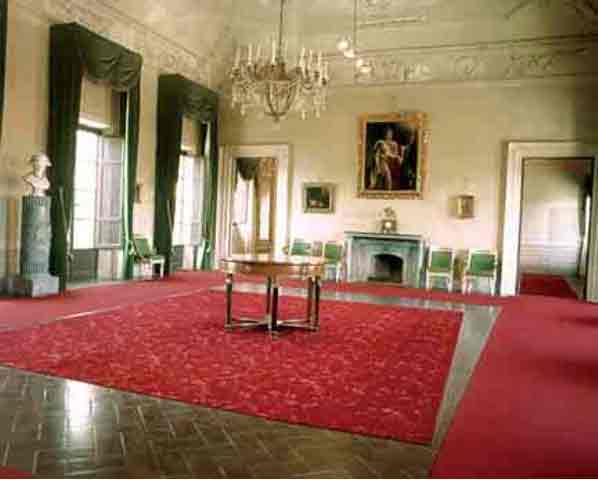The Emperor’s heritage: the places and legacies of Napoleon
One of the greatest generals of all time, after his defeat at Leipzig, Napoleon Bonaparte, was sent to rule the island of Elba. Between 1814 and 1815 all his efforts were directed towards this small new kingdom which he governed with enthusiasm: he studied local resources, reorganized agriculture, transport and trade, and even designed Elba’s flag: white with gold bees on a red stripe.
It is easy to discover the many places occupied by Napoleon; the main one is the Villa dei Mulini in Portoferraio, between Forte Falcone and Forte Stella, located in a perfect position for controlling both the sea and the town. This simple residence is the result of the union of two grand-ducal houses and includes the Salone dei Ricevimenti or Reception Hall, created by raising the ceiling, the Salone degli Ufficiali or Officers’ Hall, a private study, the bedroom , and the Sala dei Valletti or Valets’ Room. Naturally, the rooms have been decorated and furnished in Empire style.
For the summer season, Napoleon chose a house in the countryside, the Villa di San Martino (fig. 24), not far from Portoferraio, which he had redecorated by various people, in particular Pietro Ravelli, who frescoed some emblematic rooms: the Sala Egizia or Egyptian Room, which refers to one of the general’s military campaigns, and has a Zodiac on the ceiling, the symbol of the power of fate; the Sala delle Colombe or Room of the Doves, depicting two doves in flight holding a ribbon in their beaks with a knot which becomes tighter as they move apart: a sign of loyalty to his wife Marie Louise of Austria; and Paolina’s bathroom, also known as the Room of Truth, because of the allegory of Truth painted on the ceiling. A Doric style gallery was added to the Villa di San Martino in the mid 19th century, with a central pronaos, built by the Emperor’s cousin, Prince Demidoff, to hold Napoleon’s relics.
There is also a statue of Galatea, attributed to Canova, depicting Napoleon’s unselfconscious sister, Paolina; legend has it that Paolina enjoyed bathing in the nude off a small island in the Gulf of Procchio, which has since been named after her. Another Napoleonic museum can be found in the Church of the Misericordia in Portoferraio, which also houses castings of the Emperor’s hand and face. By following in Napoleon’s footsteps it is also possible learn about his other passions, books and the theatre. Over 2000 books, including many essays suited to his small kingdom, were donated to the people of Elba and are preserved at Villa dei Mulini.
There are two Napoleonic theatres: one in the Villa dei Mulini, and another, larger one, known as the Teatro dei Vigilanti , in the deconsecrated church of the Carmine in Portoferraio. Other Napoleonic sites on the island include the hermitage in the woods near the sanctuary of Madonna del Monte and, nearby, a curious rock known as “Napoleon’s Chair”, from where the Emperor is said to have admired the view of “his” Corsica




